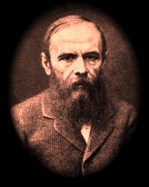

Family |
Profession |
Friends/Acquaintances |
|
| Rodión Romanovich Raskolnikov |
Pulkhéria Alexándrovna
(mother); Avdótya Románovna (Dúnya,
Dúnechka [sister]); Peter Petróvich
Lúzhin (Dunya's fiancé) |
Raskolnikov, (former) law student; Dúnya,
former governess; mother, knitter and pensioner; Luzhin,
Civil Councillor |
Dmítri Prokófich Razumíkhin |
| Semën Zakhárovich Marmeladov |
Katerina Ivanovna (wife); Sófya
Semënovna (Sonya,
Sónechka [daughter]); other kids: Polína
Mikháylovna (Pólya, Pólenka,
Pólechka); Lëna (Lída, Lídochka);
and Kólya (Kólka) |
Marmleladov, ex-government clerk; Sonya,
prostitute |
Marmeladov meets Raskolnikov in a bar (9-11);
Andréy Semënovich Lebezyátnikov
is his neighbor (10, 15); Amalia
Ivanovna/Ludwigovna Lippewechsel is their landlady
|
| Alëna Ivánovna |
Lizavéta Ivanovna (half-sister) |
Moneylender (Alena) and consignment broker
(Lizaveta) |
Raskolnikov and others pawn their wares to
her |
| Peter Petrovich Luzhin |
Engaged to Raskolnikov's
sister Dunya; Andréy Semënovich Lebezyátnikov
is his former ward |
Civil Councillor |
See 'family'; living in Amalia Ivanovna/Ludwigovna
Lippewechsel's
lodgings and hence acquainted with Katerina Ivanovna and Sonya |
| Dmitri Prokofich Razumikhin |
Porfiry Petrovich (cousin), the examiner in
charge of Alena and Lizaveta Ivanovna's murder
investigations |
Law student like Raskolnikov
|
Only friend of Raskolnikov;
increasingly close to Raskolnikov's mother and sister;
friend of the doctor Zosimov |
1792 |
Mary Wollstonecraft's A Vindication of the Rights of Women in England |
1844 |
Friedrich Nietzsche born ("God is dead")
|
1848 |
Revolutions in Europe; Marx and Engels, The Communist Manifesto
|
1859 |
Darwin's Origin of Species |
1861 |
Serfs freed |
1865 |
Mendel discovers the laws of heredity. Abraham Lincoln assassinated |
1866 |
Dostoevsky's Crime and Punishment |
1867 |
Louisa May Alcott's novel, Little Women |
1869 |
Susan B. Anthony begins suffrage movement; Utilitarian John Stuart Mill's essay "The Subjection of Women" (UK) influences feminist movement |
1871 |
Germany unified as a political nation |
1879 |
Wilhelm
Wundt founds the first formal laboratory of
Psychology at the University of Leipzig
|
1885 |
Carl Benz and Gottlieb Daimler construct first motor car |
1887 |
Sherlock Holmes debuts with A Study in Scarlet |
1888 |
Jack the Ripper kills 5 prostitutes in London |
1893-96 |
Freud and Breuer work on Studies on Hysteria (1895); Also in 1895: Roentgen discovers X-rays. Pocket camera produced by Kodak. Oscar Wilde imprisoned for homosexuality. |
1898 |
First commercial wireless telegram transmitted |
1903 |
Wright Brothers' first powered flight at Kitty Hawk |
1917 |
Russian Revolution |
FAMILIAL
ECONOMIC
PHILOSOPHICAL
PSYCHOLOGICAL
| Mrs. Zarnitsyna's (183) |
Mrs. Lippewechsel's |
| Raskolnikov and his
visitors: Razumikhin, Zosimov, mother (Pulkheria
Alexandrovna), sister (Dunya) |
Marmeladov's family:
Katerina Ivanovna, Sonya, the kids Luzhin and his ward Andrey Semënovich Lebezyatnikov (125) |